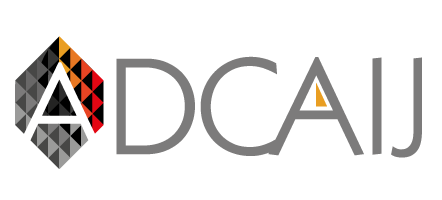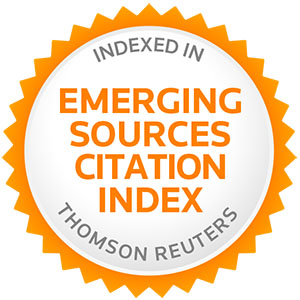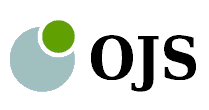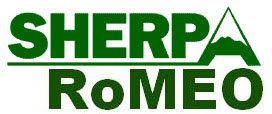Advances in Distributed Computing and Artificial Intelligence Journal
Guidelines
The Advances in Distributed Computing Intelligence Journal (ADCAIJ) welcomes basic and applied papers describing mature work involving computational accounts of aspects of intelligence that is both complete and novel. The question of whether a paper is complete is ultimately determined by reviewers and editors on a case-by-case basis. Generally, a paper should include all relevant proofs and/or experimental data, a thorough discussion of connections with the existing literature, and a convincing discussion of the motivations and implications of the presented work. A paper is novel if the results it describes were not previously published by other authors, and were not previously published by the same authors in any archival journal. In particular, a previous conference publication by the same authors does not disqualify a submission on the grounds of novelty. However, it is rarely the case that conference papers satisfy the completeness criterion without the addition of new material. Indeed, even prize winning papers from major conferences often undergo major revision following referee comments before being accepted to ADCAIJ.
The journal reports results achieved; proposals for new ways of looking at AI problems must include demonstrations of effectiveness. Papers describing systems or architectures integrating multiple technologies are welcomed. ADCAIJ also invites papers on applications, which should describe a principled solution, emphasize its novelty, and present an in-depth evaluation of the AI techniques being exploited.
Artificial Intelligence caters to a broad readership. Papers that are heavily mathematical in content are welcome but should be preceded by a less technical introductory section that is accessible to a wide audience. Papers that are only mathematics, without demonstrated applicability to Artificial Intelligence problems may be returned: a discussion of the work's implications on the production of artificially intelligent systems is normally expected.
Manuscript Length
There is no restriction on the length of submitted manuscripts but a minimum of fourteen and maximum of twenty-five pages is recommended. Moreover, authors should note that publication of lengthy papers, typically greater than forty pages, is often significantly delayed, as the length of the paper acts as a disincentive to the reviewer to undertake the review process. Unedited theses are acceptable only in exceptional circumstances. Editing a thesis into a journal article is the author's responsibility, not the reviewer's.
Ethics
Conflict of interest
All authors are requested to disclose any actual or potential conflict of interest including any financial, personal or other relationships with other people or organizations within three years of beginning the submitted work that could inappropriately influence, or be perceived to influence, their work.
Plagiarism
Submission of an article implies that the work described has not been published previously (except in the form of an abstract or as part of a published lecture or academic thesis), that it is not under consideration for publication elsewhere, that no article with substantially the same content will be submitted for publication elsewhere while it is under review by ADCAIJ, that its publication is approved by all authors and tacitly or explicitly by the responsible authorities where the work was carried out, and that, if accepted, it will not be published elsewhere in the same form, in English or in any other language, without the written consent of the copyright-holder.
Contributors
Each author is required to declare his or her individual contribution to the article: all authors must have materially participated in the research and/or article preparation, so roles for all authors should be described. The statement that all authors have approved the final article should be true and included in the disclosure.
Changes to authorship
This policy concerns the addition, deletion, or rearrangement of author names in the authorship of accepted manuscripts:
- Before the accepted manuscript is published in an online issue: Requests to add or remove an author, or to rearrange the author names, must be sent to the Journal Manager from the corresponding author of the accepted manuscript and must include: (a) the reason the name should be added or removed, or the author names rearranged and (b) written confirmation (e-mail, fax, letter) from all authors that they agree with the addition, removal or rearrangement. In the case of addition or removal of authors, this includes confirmation from the author being added or removed. Requests that are not sent by the corresponding author will be forwarded by the Journal Manager to the corresponding author, who must follow the procedure as described above. Note that: (1) Journal Managers will inform the Journal Editors of any such requests and (2) publication of the accepted manuscript in an online issue is suspended until authorship has been agreed.
- After the accepted manuscript is published in an online issue: Any requests to add, delete, or rearrange author names in an article published in an online issue will follow the same policies as noted above and result in a corrigendum.
Copyright
All information about the copyright can be found at: adcaij.usal.es/ethical-standards
Language and language services
Please write your text in good English (American or British usage is accepted, but not a mixture of these).
Referees
The editors of the journal Artificial Intelligence notify reviewers in advance that by accepting a manuscript for review they also accept an obligation to maintain confidentiality of the manuscript's contents; this obligation ends only when the manuscript becomes lawfully available to them through another channel without an obligation of confidentiality.
Article structure
Subdivision - numbered sections
You must adapt your submission to the journal template. Template sources can be found at: https://adcaij.usal.es/authors/template
You must submit the contribution to our system. If you are experiencing some problems with the process, you can take a look to our tutorial here, or contact with the Technical Support (adcaij@usal.es).
Divide your article into clearly defined and numbered sections. Subsections should be numbered 1.1 (then 1.1.1, 1.1.2, ...), 1.2, etc. (the abstract is not included in section numbering). Use this numbering also for internal cross-referencing: do not just refer to 'the text'. Any subsection may be given a brief heading. Each heading should appear on its own separate line
Introduction
State the objectives of the work and provide an adequate background, avoiding a detailed literature survey or a summary of the results.
Material and methods
Provide sufficient detail to allow the work to be reproduced. Methods already published should be indicated by a reference: only relevant modifications should be described.
Theory/calculation
A Theory section should extend, not repeat, the background to the article already dealt with in the Introduction and lay the foundation for further work. In contrast, a Calculation section represents a practical development from a theoretical basis.
Results
Results should be clear and concise.
Discussion
This should explore the significance of the results of the work, not repeat them. A combined Results and Discussion section is often appropriate. Avoid extensive citations and discussion of published literature.
Conclusions
The main conclusions of the study may be presented in a short Conclusions section, which may stand alone or form a subsection of a Discussion or Results and Discussion section.
Appendices
If there is more than one appendix, they should be identified as A, B, etc. Formulae and equations in appendices should be given separate numbering: Eq. (A.1), Eq. (A.2), etc.; in a subsequent appendix, Eq. (B.1) and so on. Similarly for tables and figures: Table A.1; Fig. A.1, etc.
Essential title page information
- Title. Concise and informative. Titles are often used in information-retrieval systems. Avoid abbreviations and formulae where possible.
- Author names and affiliations. Where the family name may be ambiguous (e.g., a double name), please indicate this clearly. Present the authors' affiliation addresses (where the actual work was done) below the names. Indicate all affiliations with a lower-case superscript letter immediately after the author's name and in front of the appropriate address. Provide the full postal address of each affiliation, including the country name and, if available, the e-mail address of each author.
- Corresponding author. Clearly indicate who will handle correspondence at all stages of refereeing and publication, also post-publication. Ensure that telephone and fax numbers (with country and area code) are provided in addition to the e-mail address and the complete postal address. Contact details must be kept up to date by the corresponding author.
- Present/permanent address. If an author has moved since the work described in the article was done, or was visiting at the time, a 'Present address' (or 'Permanent address') may be indicated as a footnote to that author's name. The address at which the author actually did the work must be retained as the main, affiliation address. Superscript Arabic numerals are used for such footnotes.
Abstract
A concise and factual abstract is required. The abstract should state briefly the purpose of the research, the principal results and major conclusions. An abstract is often presented separately from the article, so it must be able to stand alone. For this reason, References should be avoided, but if essential, then cite the author(s) and year(s). Also, non-standard or uncommon abbreviations should be avoided, but if essential they must be defined at their first mention in the abstract itself.
Highlights
Highlights are a short collection of bullet points that convey the core findings of the article. Highlights are optional and should be submitted in a separate file in the online submission system. Please use 'Highlights' in the file name and include 3 to 5 bullet points (maximum 85 characters, including spaces, per bullet point).
Keywords
Immediately after the abstract, provide a maximum of 10 keywords, avoiding general and plural terms and multiple concepts (avoid, for example, "and", "of"). Be sparing with abbreviations: only abbreviations firmly established in the field may be eligible. These keywords will be used for indexing purposes.
Abbreviations
Define abbreviations that are not standard in this field in a footnote to be placed on the first page of the article. Such abbreviations that are unavoidable in the abstract must be defined at their first mention there, as well as in the footnote. Ensure consistency of abbreviations throughout the article.
Acknowledgements
Collate acknowledgements in a separate section at the end of the article before the references and do not, therefore, include them on the title page, as a footnote to the title or otherwise. List here those individuals who provided help during the research (e.g., providing language help, writing assistance or proof reading the article, etc.).
Math formulae
Present simple formulae in the line of normal text where possible and use the solidus (/) instead of a horizontal line for small fractional terms, e.g., X/Y. In principle, variables are to be presented in italics. Powers of e are often more conveniently denoted by exp. Number consecutively any equations that have to be displayed separately from the text (if referred to explicitly in the text).
Footnotes
Footnotes should be used sparingly. Number them consecutively throughout the article, using superscript Arabic numbers. Many wordprocessors build footnotes into the text, and this feature may be used. Should this not be the case, indicate the position of footnotes in the text and present the footnotes themselves separately at the end of the article. Do not include footnotes in the Reference list.
Table footnotes
Indicate each footnote in a table with a superscript lowercase letter.
Artwork
Electronic artwork
General points
- Make sure you use uniform lettering and sizing of your original artwork.
- Save text in illustrations as 'graphics' or enclose the font.
- Only use the following fonts in your illustrations: Arial, Courier, Times, Symbol.
- Number the illustrations according to their sequence in the text.
- Use a logical naming convention for your artwork files.
- Provide captions to illustrations separately.
- Produce images near to the desired size of the printed version.
- Submit each figure as a separate file.
- Formats
Regardless of the application used, when your electronic artwork is finalised, please 'save as' or convert the images to one of the following formats (note the resolution requirements for line drawings, halftones, and line/halftone combinations given below):
EPS: Vector drawings. Embed the font or save the text as 'graphics'.
TIFF: Color or grayscale photographs (halftones): always use a minimum of 300 dpi.
TIFF: Bitmapped line drawings: use a minimum of 1000 dpi.
TIFF: Combinations bitmapped line/half-tone (color or grayscale): a minimum of 500 dpi is required. - If your electronic artwork is created in a Microsoft Office application (Word, PowerPoint, Excel) then please supply 'as is'.
- Supply files that are optimised for screen use (e.g., GIF, BMP, PICT, WPG); the resolution is too low;
- Supply files that are too low in resolution;
- Submit graphics that are disproportionately large for the content.
Color Artwork
Submit colour illustrations as original photographs, high-quality computer prints or transparencies, close to the size expected in publication, or as 35 mm slides. Please make sure that artwork files are in an acceptable format (TIFF, EPS or MS Office files) and with the correct resolution. Polaroid colour prints are not suitable. If, together with your accepted article, you submit usable figures then ADCAIJ will ensure, at no additional charge, that these figures will appear in color on the Web (e.g., ScienceDirect and other sites) regardless of whether or not these illustrations are reproduced in color in th eprinted version. Color illustrations will be printed in color if, in the opinion of the Editors, the color is essential. If this is not the case, you will receive information regarding the costs for colour reproduction in pribnt from ADCAIJ, after receipt of your accepted article. Please indicate your preference for color in print or on the Web only. For further information on the preparation of electronic artwork, please see https://adcaij.usal.es/authors/guidelines. Please note: Because of technical complications which can arise by converting colour figures to "grey scale" (for the printed version should you not opt for color in print) please submit in addition usable black and white versions of all the color illustrations.
Figure captions
Ensure that each illustration has a caption. Supply captions separately, not attached to the figure. A caption should comprise a brief title (not on the figure itself) and a description of the illustration. Keep text in the illustrations themselves to a minimum but explain all symbols and abbreviations used.
Tables
Number tables consecutively in accordance with their appearance in the text. Place footnotes to tables below the table body and indicate them with superscript lowercase letters. Avoid vertical rules. Be sparing in the use of tables and ensure that the data presented in tables do not duplicate results described elsewhere in the article.
Citation in text
Please ensure that every reference cited in the text is also present in the reference list (and vice versa). Any references cited in the abstract must be given in full. Unpublished results and personal communications are not recommended in the reference list, but may be mentioned in the text. If these references are included in the reference list they should follow the standard reference style of the journal and should include a substitution of the publication date with either 'Unpublished results' or 'Personal communication'. Citation of a reference as 'in press' implies that the item has been accepted for publication.
Web references
As a minimum, the full URL should be given and the date when the reference was last accessed. Any further information, if known (DOI, author names, dates, reference to a source publication, etc.), should also be given. Web references can be listed separately (e.g., after the reference list) under a different heading if desired, or can be included in the reference list.
Reference Style
All references are to be listed at the end of the paper in alphabetical order under the first author's name and numbered consecutively by arabic numbers. Chronological order is used if there is more than one publication by the same author or team of authors.
Example:
|
One author Cite: (Corchado, 2014) |
Corchado, J.M. (2014). Multiagent systems Applications. Spanish Journal of Artificial Intelligence Research, 145, 73-8. https://doi.org/10.5488/cis/iass.145.73 |
|
Two authors Cite: (Corchado and Lees, 2001) |
Corchado, J. M., & Lees, B. (2001). A hybrid case-based model for forecasting. Applied Artificial Intelligence, 15(2), 105-127. |
|
Three or more authors Cite: (Corchado et al., 2003) |
Corchado, J. M., Corchado, E. S., Aiken, J., Fyfe, C., Fernandez, F., & Gonzalez, M. (2003). Maximum likelihood hebbian learning based retrieval method for cbr systems. In Case-Based Reasoning Research and Development: 5th International Conference on Case-Based Reasoning, ICCBR 2003 Trondheim, Norway, June 23–26, 2003 Proceedings 5 (pp. 107-121). Springer Berlin Heidelberg. |
Please ensure that every reference cited in the text is also present in the reference list (and vice versa). Any references cited in the abstract must be given in full. Unpublished results and personal communications are not recommended in the reference list, but may be mentioned in the text. If these references are included in the reference list they should follow the standard reference style of the journal and should include a substitution of the publication date with either "Unpublished results" or "Personal communication" Citation of a reference as "in press" implies that the item has been accepted for publication.
The style of bibliographic citation will follow the American Psychological Association (APA) 7th edition standards, both in the body of the text and in the final heading of References. All cited references and only cited references will be included under the heading References. Word template provides examples of the correct format of the cites. The references must also include:
- Journal papers: Names and initials of all authors, title of paper, journal name, volume number, issue number, year of publication, and first and last page numbers of the paper.
- Monographs: Names and initials of all authors, title of the monograph, publisher, publisher's residence, year of publication.
- Edited volume papers: Names and initials of all authors, title of paper, names and initials of the volume editors, title of the edited volume, publisher, publisher's residence, year of publication, and first and last page numbers of the paper.
- Conference proceedings papers: Names and initials of all authors, title of paper, name of the conference, conference site and country (publisher, publisher's residence), year of publication, and first and last page numbers of the paper.
- Unpublished papers: Names and initials of all authors, title of the article, and all other relevant information needed to identify the article (e.g., technical report, Ph.D. thesis, institute, year of compilation, etc.).
Copyright Notice
Ethical standards for the ADCAIJ journal
The authors will adhere to international copyright standards for written, graphic and other materials included in their writings sent to ADCAIJ for publication. For their part, the editors, the editorial staff, and journal reviewers will ensure that the integrity of the research is upheld, an effort that corresponds first and foremost to the authors. Consequently, authors will be asked to continue avoiding the practice of plagiarism and self-?plagiarism. The Corresponding Author signs for and accepts responsibility for releasing this material on behalf of any and all Co-Authors.
Privacy Statement
The names and email addresses entered in this journal site will be used exclusively for the stated purposes of this journal and will not be made available for any other purpose or to any other party.
















